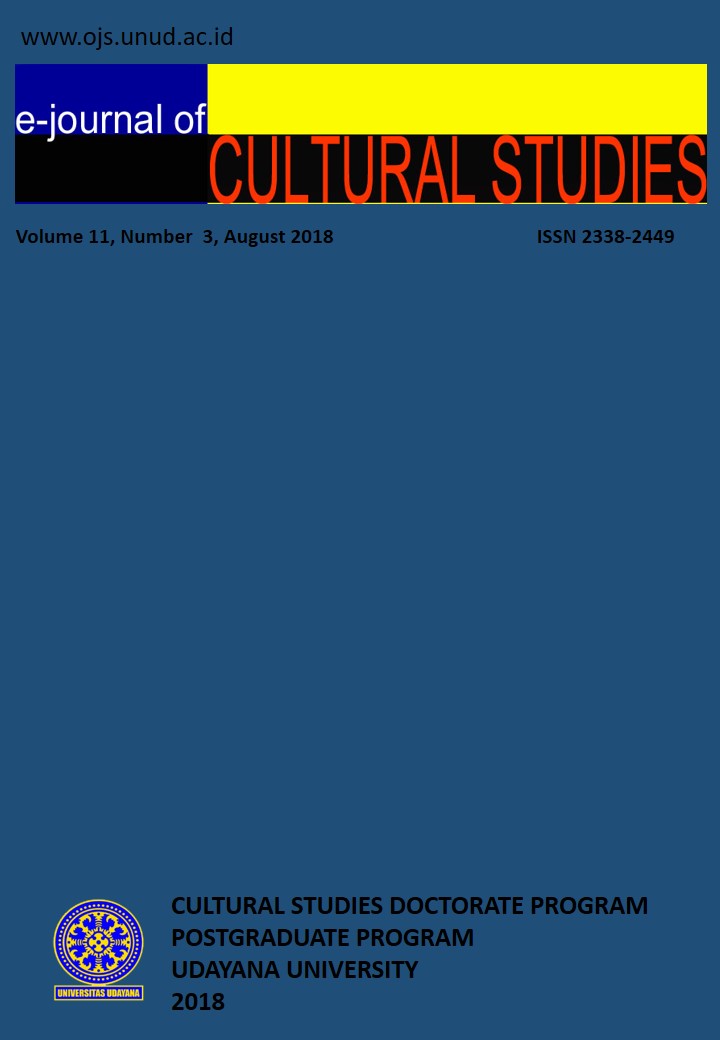BATUR: THE MOUNT, LAKE, AND TEMPLE’S SANCTITY, SOCIAL RELATIONS IN THE COMMUNITY, AND THE TOURISM BUSINESS
Abstract
Batur region in Kintamani Subdistrict, Bangli, Bali, is at first a living place of a group of local people with holy, sacred markers characterized by Hinduism. The most popular holy markers are Mount Batur (1717 m), Lake Batur, and Pura (Temple) Ulun Danu Batur. Later Batur is known as a tourist destination where many tourists both domestic and international come and go everyday. This paper describes the existence of the Batur region as a unity of three things: sanctity or holiness (sacred area), social relations of the local community, and tourism business. This study is qualitative which its data is taken from books, journals, and other documents with the techniques of qualitative data analysis.
The result of the study shows there is a high complexity in Batur due to its position as a sanctuary (holy area), a place of community life, and a tourism area. Batur is a sacred area, at least because of the Mount Batur, Lake Batur, and Ulun Danu Batur Temple so that such a region is honoured by all Hindu believers in Bali and outside Bali. However, today, Batur is also known as a popular tourist area because the mount, the lake, and the temple are really very interesting to be enjoyed (or consumed as tourism products) and in fact, the region is also surrounded by other beautiful tourist attractions in Batur and Kintamani, i.e. Penelokan, Toyabungkah, Trunyan village, agricultural fields, and a new, man-made one that is the Batur Global Geopark.







